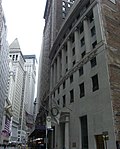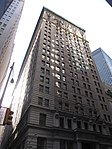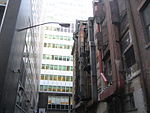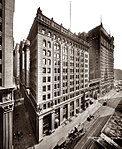Drexel Burnham Lambert

Drexel Burnham Lambert was an American multinational investment bank that was forced into bankruptcy in 1990 due to its involvement in illegal activities in the junk bond market, driven by senior executive Michael Milken. At its height, it was a Bulge Bracket bank, as the fifth-largest investment bank in the United States.The firm had its most profitable fiscal year in 1986, netting $545.5 million—at the time, the most profitable year ever for a Wall Street firm, and equivalent to $1.16 billion in 2021. Milken, who was Drexel's head of high-yield securities, was paid $295 million, the highest salary that an employee in the modern history of the world has ever received. Withal, Milken deemed his salary to be insufficient for his contributions to the bank, and received $550 million the next fiscal year.The firm's aggressive culture led many Drexel employees to stray into unethical, and sometimes illegal, conduct. Milken and his colleagues at the high-yield bond department believed the securities laws hindered the free flow of trade. Eventually, Drexel's excessive ambition led it to abuse the junk bond market and become involved in insider trading. In February 1990, Drexel was forced into Chapter 11 bankruptcy by the chairmen of the New York Federal Reserve and the Securities and Exchange Commission. It was the first Wall Street firm to be forced into bankruptcy since the Great Depression. After Drexel's collapse, Kurt Eichenwald of The New York Times noted that the bank "fueled many of the biggest corporate takeovers of the 1980s."
Excerpt from the Wikipedia article Drexel Burnham Lambert (License: CC BY-SA 3.0, Authors, Images).Drexel Burnham Lambert
Broad Street, New York Manhattan
Geographical coordinates (GPS) Address Nearby Places Show on map
Geographical coordinates (GPS)
| Latitude | Longitude |
|---|---|
| N 40.70536 ° | E -74.01198 ° |
Address
50 Broad Street
Broad Street 50
10004 New York, Manhattan
New York, United States
Open on Google Maps










